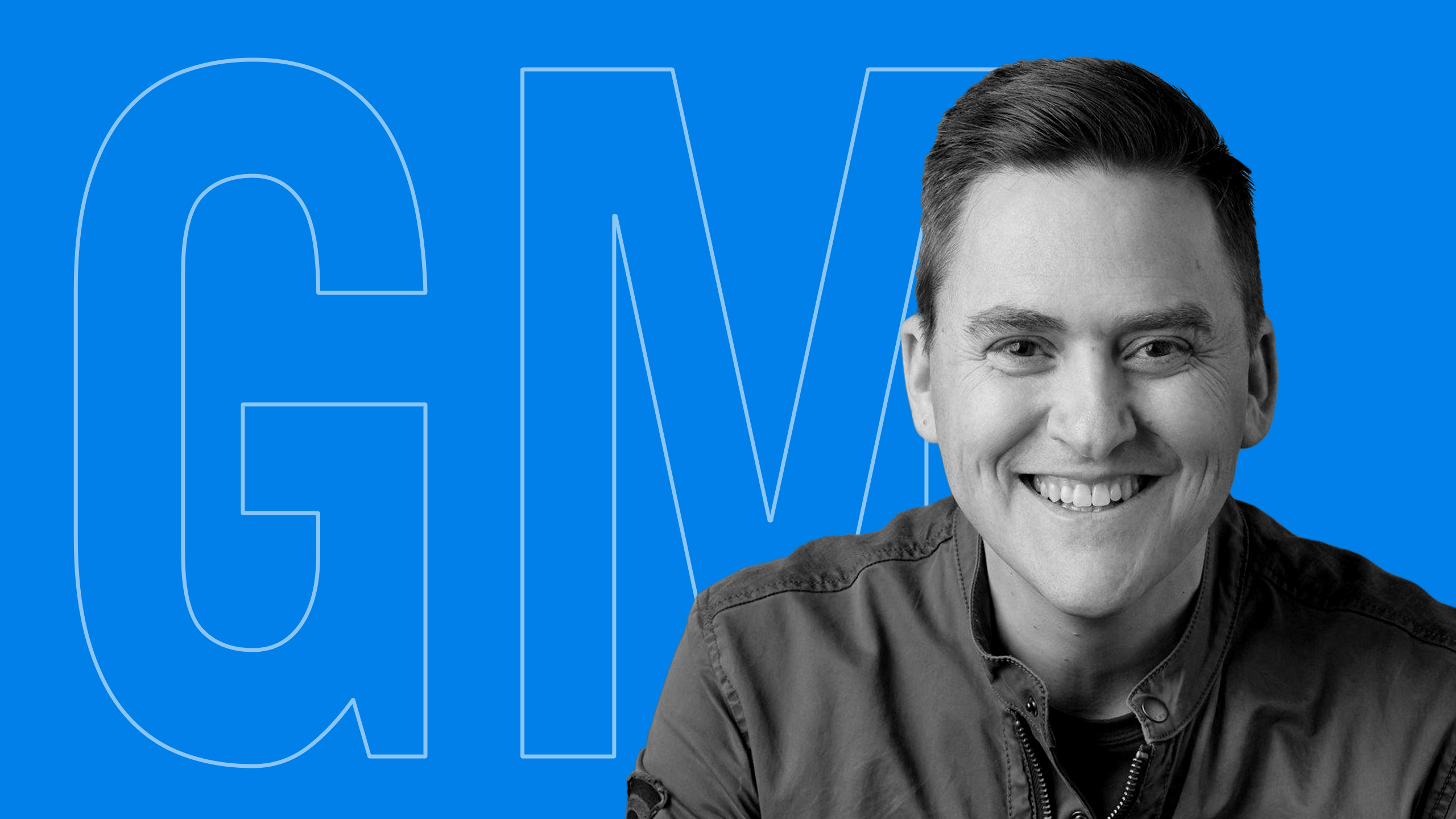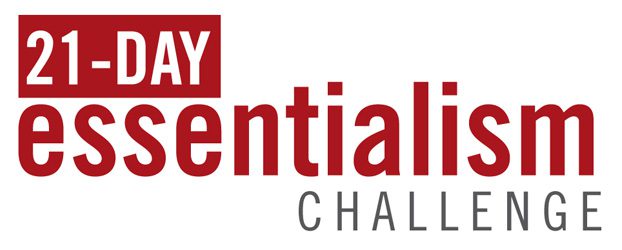Greg McKeown:
Welcome. I’m your host, Greg McKeown, and I am here with you on this journey to learn how to be 1% wiser every day.
Have you ever been to a meeting where a few loud people dominated the meeting, but the quiet people with the answer didn’t even get heard? It’s long been thought that if you put the right people in the room, then you’ll get the right answer, but this is as false as it can be. What we know now is that you need to lead the right process to be able to get the right ideas to come to the surface.
Today, I’m going to share a story or two, some counterintuitive research that I’ve been reading, and some actionable advice. By the end of this episode, you’ll be able to get the right answer to the right problem more often in your meetings. Let’s begin.
Pay attention today for one insight you can share with one other person within the next 24 to 48 hours.
Wherever you are today, whatever you are doing, I know one thing almost for certain, and that is you have meetings in your life and perhaps too many of them, certainly too many of them, that don’t really address the real problem or manifest the right answer to the right problem.
There are too many dysfunctional, toxic ways of doing meetings to even begin to name them here, but figuring out how to get more out of these meetings is essential because you spend so much time in them.
This week I was fiddling around for about 20 seconds or so in drawing out a rough image of an iceberg just with a sharpie on paper. The part of the iceberg above the water I marked, “Loud people in the meeting,” and at the very bottom of the iceberg, way below the surface of the water, I marked a small red zone and labeled it, “The quiet person with the answer.”
And you can see the idea that you go to a meeting. There are a few people who dominate everything, and then there are quiet people. They say almost nothing, but they actually have key insight that would help resolve the problem at stake, would actually improve the decision, and help us to make better decisions faster.
What I wrote in the post was also simple and straightforward. Let me read it to you. There are small but incredibly valuable insights available to all of us, but they are often below the surface. In meetings, it’s tempting to pay attention to the loud, confident voices. However, the deep thinkers who hold back often have the key. You need to unlock your problem and move forward. It’s not just a question of listening, it’s listening for the right things from the right people.
I didn’t think much about that post, but I have thought about it a lot since because it clearly hit a nerve. There’s literally been more than a thousand comments already and counting. There’s 3000 reposts. There’s 30,000 likes. There’s 2 million impressions, and on it goes, and I should say right here at the outset that I’m not trying to pick on loud people. I am not saying, for example, the people who talk more or who are more extroverted don’t ever have the answers. Of course, they do. The thing is, when people who talk more or more confidently or more smoothly or more openly have the answer, people already know about it because it’s already being expressed. Nor am I saying that everyone who is quiet has the answer. It’s obviously true that someone who is not speaking may not have the answer. The thing is, when people don’t talk as much or as confidently or smoothly or openly, but they do have the answer, people won’t know because it isn’t being expressed.
It takes a particular approach to facilitation, to team dynamics, to creating team rules and expectations to make sure the best ideas win out. As I was thinking about these kinds of decisions and meeting dynamics out there in our family, we had our own little discussion about what movie to watch, and one of the classic movies our children hadn’t seen was 13 Days, which covers what Joe Fuller, one of the faculty members at Harvard Business School has described this way. He says, “There is no clearer example of decision-making done right than Kennedy’s management of his team during the Cuban missile crisis. It’s timeless and breathtaking when you recall what was at stake.”
And what was at stake was perhaps the closest we had ever come to all-out nuclear war. It came at a time when that was in the psyche of people and leaders all over the world far more than it is today. Even with all that is happening in this terrible war, this atrocity in Ukraine, it still seemed that it was a part of the psychological condition of the world at that time, the fear of escalating conflict.
The movie is named, well, 13 Days because that was the period in which there had to be a decision made. What do we do? But behind that question, what do we do, what’s the solution, what’s the right response? is another question. It’s not as obvious, but it’s just as important, and that is How will we make the decision? Because at the heart of this most important decision, as it always is, is communication. There is the non-trivial way that the leaders in those meetings will communicate.
On the one hand, you have the way that those leaders in the meeting in the White House in the Pentagon will communicate in order to determine what to do and when. And then, if you go even more precisely to the heart of the matter, you discover that the entire crisis is really about how Khrushchev the president of the then Soviet Union, and Kennedy will learn to talk to each other.
It’s easy to think that this is all about catastrophic bombs, massive military operations, but at the very center of it all, it’s about a conversation, and if the conversation is had in the wrong way, then everything, everything blows up. And it’s not like this can’t go wrong, as Morton Hansen puts it so clearly, “Just 18 months earlier, Kennedy made arguably the worst decision he ever made to support an ill-conceived covert operation to unseat Fidel Castro known today as the Bay Pigs fiasco. That decision was so bad that Yale psychologist, Irving, Janice used it to coin the term groupthink, which refers to a psychological drive for consensus at any cost that suppresses descent and appraisal of alternatives Historian Arthur Schlesinger, who took part in that decision process, later wrote that our meetings were taking place in a curious atmosphere of assumed consensus, and not one spoke against it.”
So you have this great contrast between the Bay of Pigs invasion and the Cuban Missile Crisis. They’re two completely different events, but you can see how they’re similar as well. The Bay of Pigs invasion, on the one hand, it’s taking place in 1961. It’s a failed attempt by the United States to overthrow the Cuban government and was widely considered this major embarrassment for the Kennedy administration. And in contrast, on the other, the Cuban missile crisis of 1962, you have this tense standoff between the US and the Soviet Union, but one that ultimately ends in a peaceful resolution and a victory for President Kennedy’s diplomatic efforts.
While the Bay of Pig serves this cautionary tale of poor planning, communication, and execution, the Cuban Missile Crisis illustrates the importance of this strategic thinking and effective communication.In the midst of crisis.
Hansen, in Harvard Business Review, wrote an article called How John F. Kennedy Changed Decision Making For All of Us, and that I think is not an exaggeration. The Bay of Pigs fiasco was so troublesome that Kennedy ordered a review of the decision-making, how did it go so badly? And this was at a time curiously surprising to our modern view where even the military was not doing formal after-action reviews. Think of that.
Hansen shares four specific changes that were made as a result of that review.
- Each participant should function as a skeptical generalist focusing on the problem as a whole rather than approaching it from his or her department’s standpoint.
That is simple and brilliant how often I have gone into meetings in which content experts keep expressing views based on their particular area.
- To stimulate freewheeling discussions, the group should use informal settings with no formal agenda and protocol so as to avoid the status-laden meetings in the White House
Well, the meetings that most of us go to aren’t in the White House, but they’re still status filled. So the idea of having meetings away from the office, especially on high-stakes decisions, rings true.
- The team should be broken into subgroups that would work on alternatives and then reconvene.
- The team should sometimes meet without Kennedy present so as to avoid people simply following his views.
Let me continue with Hansen’s description. “The whole idea,” he writes, “was to solicit diverse viewpoints, stimulate debate, explore options, probe assumptions, and let the best plan win on its merits. Then on the morning of October 15th, 1962, President Kennedy and his team learn that the Soviets are placing nuclear-armed missiles in Cuba, missiles that, a few minutes after being fired, would kill 80 million Americans. That very morning top military brass insist on an immediate and massive military strike to take out the missile isles. But this time, instead of debating only the one plan, they follow the new approach, which calls for exploring options.”
“So someone suggests an alternative, a naval blockade to force the Soviets to remove the missile isles. As the new process unfolds, Kennedy instructs his brother to lead a thorough deliberation of the two alternatives.”
“The group of more than a dozen men meets in an unassuming office at the State Department and shuttles secretly back and forth to the White House. Frank discussions ensue, Robert Kennedy recalled ‘There was no rank, and in fact, we did not even have a chairman. The conversations were completely uninhibited.’”
“As time passes, they deploy another new approach. They divide into subgroups, with one developing a position paper arguing for the military strike, the other for the blockade. They then swapped papers dissecting and criticizing one another. In this way, the groups are able to probe decisions and surface pros and cons. Two days later, the group presents the fully developed alternatives to President Kennedy, who chooses to pursue the blockade. The blockade is successful and prevents a nuclear confrontation with the Soviet Union.” (1).
So I think Hansen is right to conclude that President Kennedy’s redesign of his decision-making process has had an enormous influence on today’s management thinking. However, I do find myself saying, well, but not enough yet. I personally have seen a huge range of meeting dynamics, and I would say that the most common one does not look like the kinds of meetings being described in the Cuban Missile crisis, and perhaps that’s fair enough, given that not all decisions are high stakes in that way. Not all meetings have to be anything like that, robust and intense. Nevertheless, the norm that I see is you have one or two people speaking most of the time. Often that’s the manager or whoever has been specifically assigned to facilitate that meeting. And then there’s everybody else.
It is silence that typifies most of the toxic dynamics I have observed over the last 25 years, especially in corporate environments where there’s an inherent hierarchy that everybody knows what it is, but leaders who don’t get questioned end up making questionable decisions.
So really, what can we do about it? What are the approaches to facilitation and team dynamics that can help? Well, we’ve already covered four that could easily be applied just from Hansen’s analysis of Kennedy, but let me just share a few more. I’m not suggesting that anybody tries to do all of these going forward, but maybe you could pick one or two that you think would be more helpful than what your current norms are.
- Frame the decision to be made. What is the decision, and why does it matter?
- Send it in advance and ask people to come with a point of view and some data to support it.
- Even in the meeting itself, ask people to write down answers before talking. We could describe it as a sort of writestorm before the brainstorm.
- Set rules of the road. An obligation to speak up, a culture of listening, a rule for not dominating.
- Facilitate the conversation. Actually, ask for quiet voices to speak up. Actually, ask the people who have commented a few times to hold on.
- Have louder voices restate what other people have said before, jumping in with their own opinions.
- And this is verbatim from a particular methodology of decision-making. Nobody speaks twice until everyone has spoken once.
Even sharing that idea helps everyone involved to both feel obligated to speak up, and also, if you speak up, too much, an obligation to hold back. In the final analysis, I can put it this way: In the cacophony of voices, it’s the quiet ones that hold the answers. As a leader, as a manager, as a meeting facilitator, learn to listen to them and unlock the wisdom hidden way, way beneath the surface.
What is one idea you heard today that caught your attention? Why does it matter so much to you, and who is one person you can share that with within the next 24 to 48 hours?
If you found value in this episode, please write a review on Apple Podcasts. The first five people to write a review of this episode will receive free access to the Essentialism Academy. For more details, go to essentialism.com/podcastpromo. Thank you. Really thank you for listening, and I’ll see you next time.
(1). Hansen, M.T. (2013). How John F. Kennedy Changed Decision Making for Us All. [online] Harvard Business Review. Available at: https://hbr.org/2013/11/how-john-f-kennedy-changed-decision-making.







